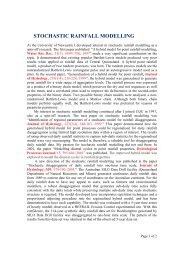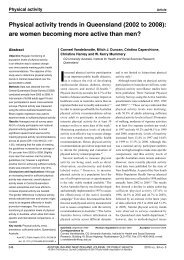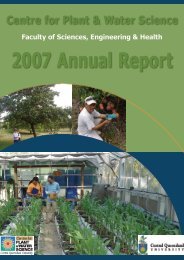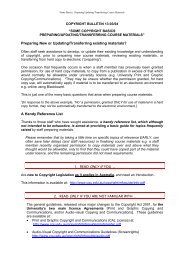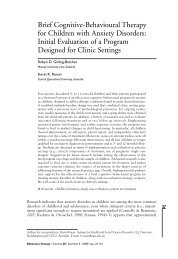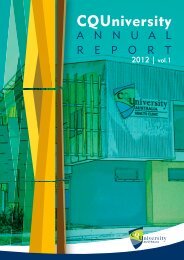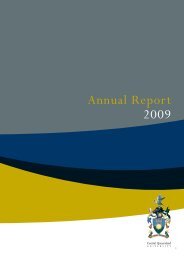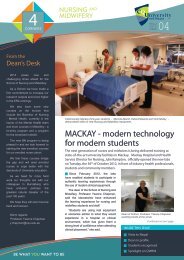Centre for Plant & Water Science - Central Queensland University
Centre for Plant & Water Science - Central Queensland University
Centre for Plant & Water Science - Central Queensland University
You also want an ePaper? Increase the reach of your titles
YUMPU automatically turns print PDFs into web optimized ePapers that Google loves.
<strong>Centre</strong> <strong>for</strong> <strong>Plant</strong> & <strong>Water</strong> <strong>Science</strong> 2008 Annual Report<br />
COMPOST TEA AS A MICROBIAL ENHANCER IN CROP<br />
PRODUCTION<br />
SUMMARY<br />
Compost tea is a microbially enhanced extract after incubating compost in water with microbial<br />
food sources (Ingham, 2005) <strong>for</strong> which many claims have been made. This research sets and tests<br />
hypotheses in the context of these claims. The following hypotheses have been established as to the<br />
efficacy of compost tea in terms of: (a) ability to directly improve plant nutrition via the nutrient<br />
content of the compost tea; (b) ability to improve plant nutrition through an indirect action, via<br />
microbial action in mineralising or solubilising of organic and inorganic components of the soil; (c)<br />
ability to offer bio-protection against a fungal pathogen (e.g. Fusarium oxysporum f. sp. lycopersici);<br />
(d) ability to accelerate litter decomposition; and (e) ability to provide protection to root growth<br />
against high levels of aluminium (Al) ions, via chelation of Al ions by humic acids or uptake by<br />
microbes.<br />
Using the experimental pots containing a previously grown tomato root systems in two soil types, the<br />
effect of addition of non-sterilised and sterilised aerated compost tea (ACT) on growth of a sorghum<br />
crop was assessed (addressing hypotheses ‘a’ and ‘b’). There was no significant difference either<br />
between the two treatments or amongst the prior fertiliser treatments in the average weight of<br />
aboveground sorghum biomass, harvested 50 days after sowing (DAS) although a significant<br />
difference was observed between the two soil types. Statistical analysis also revealed an interaction<br />
between four prior (tomato crop) treatments (control, ACT, non-aerated compost tea or NCT and<br />
chemical) and soil types (P





